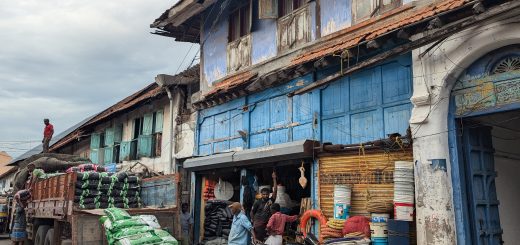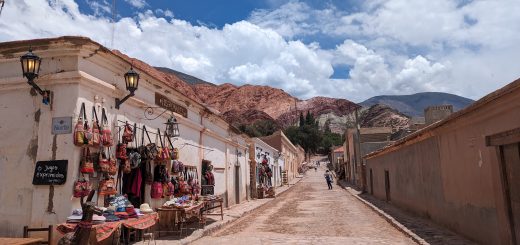Traveling to Argentina: Some Logistical Considerations

Argentina, the second biggest country in South America and the eight largest in the world is usually known for its progressive politics, its diverse capital – Buenos Aires, its tasty grilled meats, and the beautiful landscapes of Patagonia (which is usually associated with Argentina although the region spans both Chile and Argentina)
This was the third country we visited during our Gap Year following Cuba and Colombia. We had a general sketch of the places we wanted to go and the activities we wanted to accomplish and the rest we pieced together on-site, sometimes just days in advance. Our travels in Argentina included three distinct phases: one month in Buenos Aires; a two-week road trip through the provinces of Jujuy and Salta in the north-west; and roughly half of our one-month road trip through Patagonia (the rest of this road trip occuring on the Chilean side).
At a glance, here are few logistical considerations for those planning to visit Argentina:
Safety
Among our travels in Latin America over the years Argentina is one of the countries where we’ve felt the safest. We were never warned of any safety concerns, even in big cities. I ventured out as a woman alone in streets and trails and never felt at risk. Happily, we were almost never hassled to purchase anything and no one tried to take advantage of us because we were tourists. We had a positive experience in Argentina safety-wise.
Like in any unfamiliar place, some simple practices should include avoiding carrying around large sums of money, asking hosts if the tap water on-site is potable (normally it is in Argentina), knowing where the nearest medical facility is in case of emergencies, and having travel medical insurance. Also, get to know how the exchange rates work in Argentina (see below).
Money
At the time we visited, there were two exchange rates: the official (about $850 ARS per USD), and the unoficial rate, also called “blue dollar” (which fluctuated between $1,000-$1,200 ARS per USD during our visit). It’s relatively easy to get the blue dollar rate in exchange places, although we received the best rate by wiring money to ourselves using the Western Union app. The only time we tried to withdraw cash from an ATM in a town, we were not able to do so (limits are very low, and our debit cards didn’t work).
When paying with international debit or credit cards, the conversion is usually done at a price close to the blue dollar. Not only is the exchange rate beneficial to visitors, but the prices are generally low compared to those of the US or Europe for key touristic items such as lodging and restaturants, so money goes a long way in Argentina. At the time of our visit, rapid inflation was quickly changing the prices of day-to-day items in Argentina though so keep an eye on that.
Food & Essentials
There is usually a good variety of food options throughout Argentina, including some regional specialties. In Buenos Aires, we found excellent options for parrillas (grilled meats, choripanes and such) and pastas; in the north-west we found delicious comfort food (tamales, humitas, locro soup); and in the south we found ourselves eating large amounts (by our standards) of sugary treats, mostly in the form of alfajores.

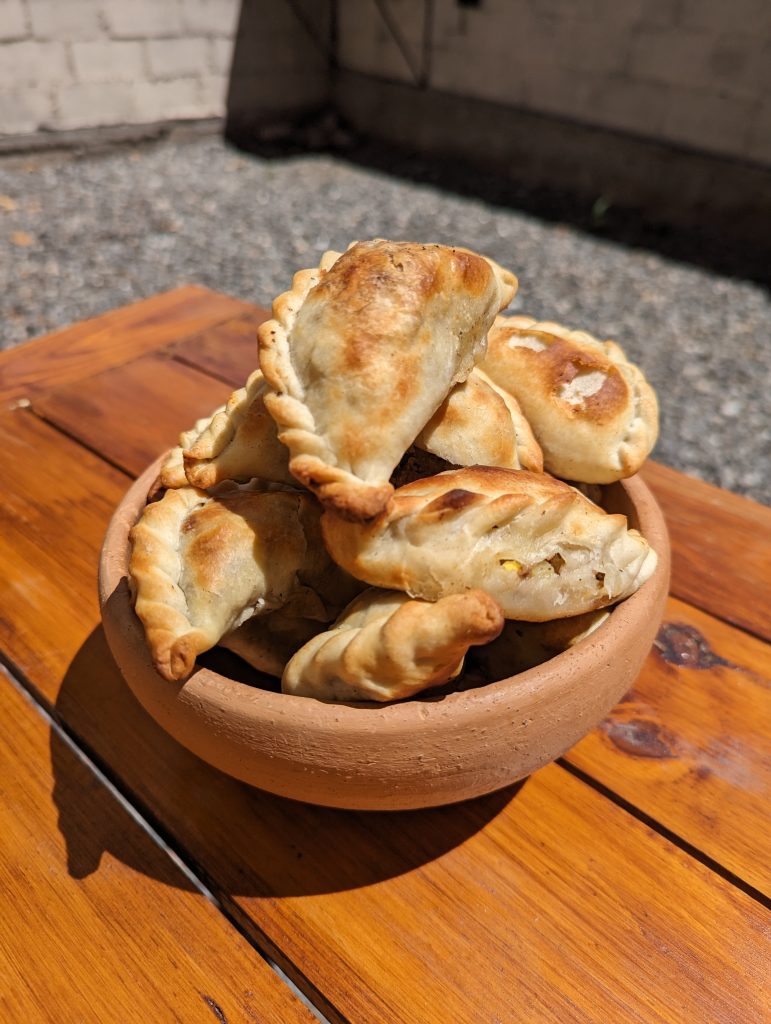

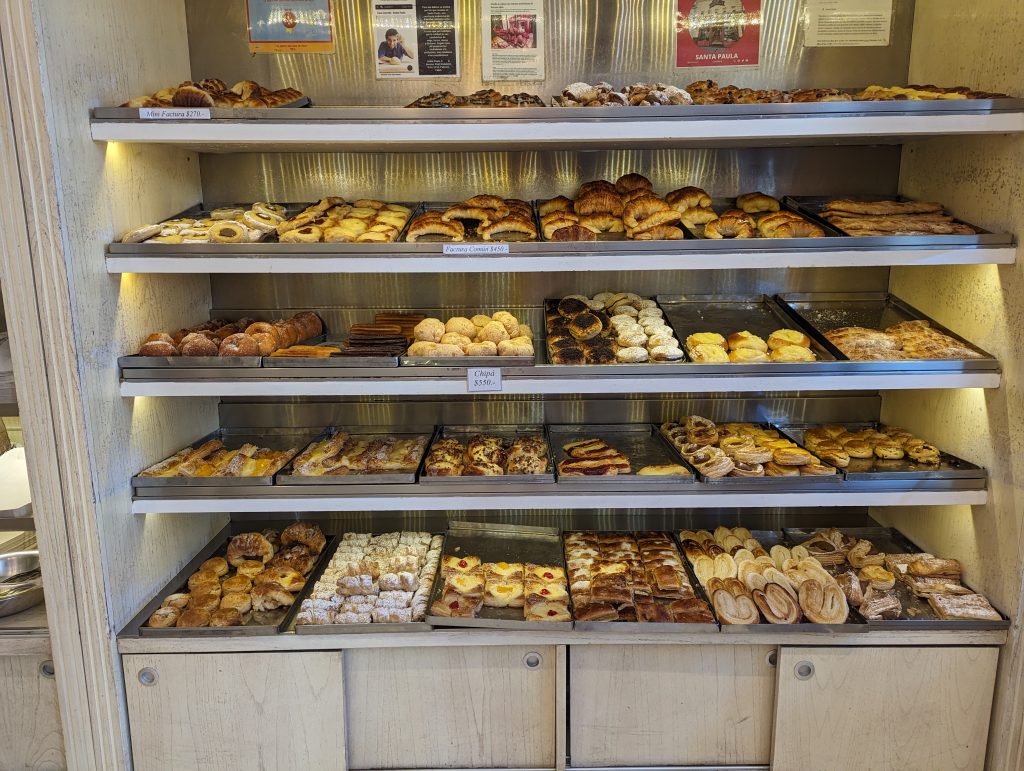
Most supermarkets (including in smaller towns) and pharmacies are stocked with the essentials needed for a comfortable stay.
The only item we found to be difficult to find in Argentina was good coffee (mate is the most popular beverage in this part of the world). Buenos Aires has a coffee shop on almost every corner, but paradoxically most supermarkets sell only instant coffee, or coffee that is pre-mixed with sugar (yuck!). Most of accommodations didn’t include coffee and/or coffee makers among their amenities. Although we ended up finding some decent ground coffee in a speciality store, in many ocassions we had to cook it in a pot and pass it through a kitchen strainer (or just blow on it to get the grinds away). Lesson learned: Bring your own coffee if you are a coffee drinker like us!
TIP: Dinner is traditionally eaten later in Argentina. As such, many restaurants open later (sometimes at 7pm or 8pm), often after closing for a few hours post-lunch. We found this challenging sometimes as we like to start our daughter’s bedtime routine by around 8pm. If you’re traveling with kids and are used to an earlier dinner, it’s a good idea to plan ahead, perhaps even calling restaurants to confirm if they are open. Restaurant hours listed on Google were consistently incorrect, for restaurants and many other businesses!
Moving Around
Since most people start from Buenos Aires, here are few practical considerations to move around in the city. The bus and metro system works with the “Sube” card, which in theory can be purchased and charged in kiosks and lottery booths but we had a hard time finding it for sale (recharging is easy). The fees are very affordable, and buses usually provide good connectivity while providing a glimpse of neighborhoods you pass through. Your Sube card works in other cities, too. Taxis are also an easy and inexpensive option to move around. From the airport you can get either an Uber or a taxi.
Buenos Aires has a good network of bicycle lanes as well as a subscription program (Eco-bici) that tourists can use with various plans (per-trip, daily, weekly, etc). It can be a little glitchy signing up and at first it may appear that you need a local ID number, but there is the option to use your foreign ID so give it a try if you want to explore the city by bike.
From Buenos Aires we traveled to the north-west, and to the south. Being one of the largest countries in the world means that the distances between regions could be vast, and ground transportation might not be the best option if you’re on a fixed schedule. We had a great experience flying in Aerolineas Argentinas (contrary to its reputation), but there are other “low-cost” airlines such as Flybondi and Jet Smart.
We rented cars during both of our trips outside of Buenos Aires as we wanted to have the flexibility to visit the places that we wanted when we wanted. Renting a car was easy, but we found some road conditions to be challenging or weather-sensitive. When in doubt, we always checked with the tourist office of the departing town. They had great information about the roads.
Although we were aware of intercity buses, ferrys and other means of transportation, we didn’t use them, but we found this article to be helpful for those who are interested.
TIP: If you’re planning a road trip in Patagonia, make sure you know whether there is a mileage limit with your car rental (we rented with Hertz in Bariloche with unlimited mileage) and consider purchasing a permit to cross back and forth into Chile.
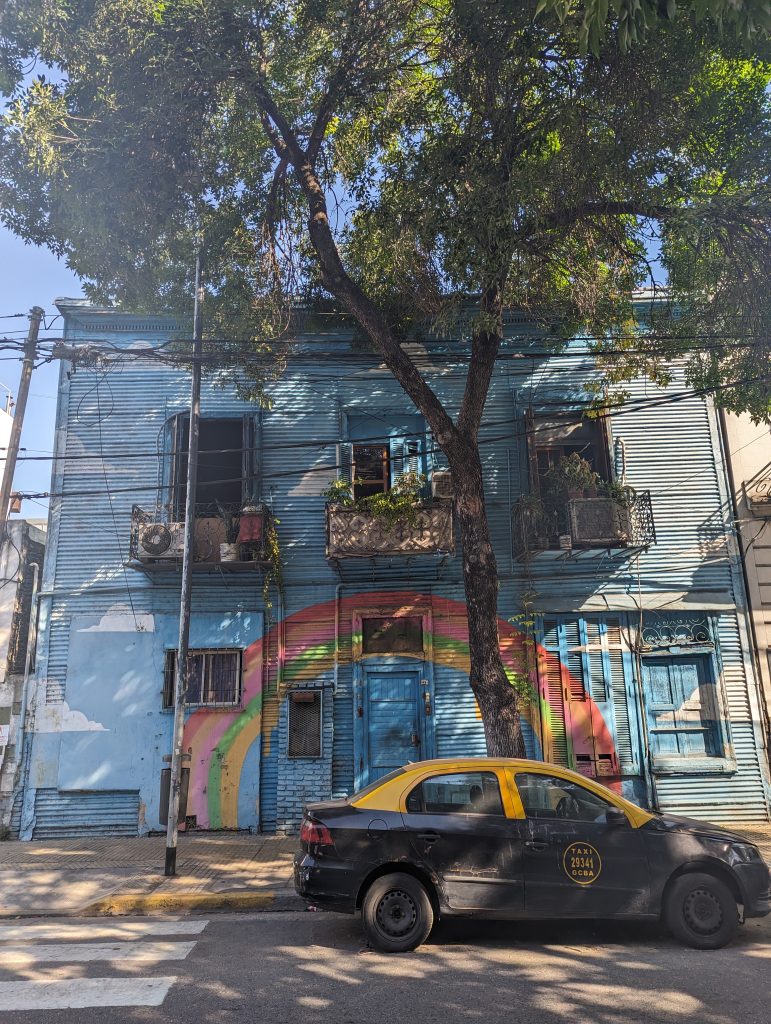
Phone and Internet
WiFi is available in most lodgings, and international roaming has relatively good connectivity in most main cities. However, we got a “tourist sim-card” through Claro that came loaded with 25GB of data for 30 days for about $8USD. Not a bad deal! When you’re moving between cities during road trips, be prepared for interruptions to your connectivity.
Best time to travel
Given the size of the country, the weather varies significantly between regions. The best time to travel depends on your personal interests and the places you would like to visit. It’s so relative, that some blogs would recommend the spring and summer, while others swear the best time is fall and winter.
We traveled in the Summer and early Fall (January – April), and it worked well for us. Summer in Buenos Aires is hot and humid, but on the flip side we could enjoy long days, summer cultural activities, food festivals, etc. Summer in the north brings rain, and although we were lucky to enjoy pleasant temperatures and sunny days, the roads get flooded very easily so flexibility is a must. Late summer is the end of the tourist season in Patagonia, so we didn’t run into any crowds and got to see the beautiful transition into fall, although we got a lot of rain! Any season has pros and cons but no matter the time you go, you are almost certainly going to enjoy your time in Argentina.
Traveling with kids
Argentina’s infrastructure and amazing landscapes make for a hard-to-beat family destination. Almost every town, regardless of size, has a playground in reasonably good condition, usually with accessible toys for kids with disabilities. Many playgrounds in Buenos Aires have been designed in a way that promotes not only play but also imagination. Think of a castle-themed tower, a town with hospitals and police stations, a jungle where the kids can climb inside a fake tree or a castor. In addition to playgrounds, there is a wide catalog of free family activities in the summer, free activities for kids in most museums year-round, seasonal exhibits and no shortage of bookstores.
TIP: Parque Las Heras in Buenos Aires has not one but three playgrounds as well as a carousel. Plaza Inmigrantes de Armenia has an excellent playground and is in a neighborhood with a huge number of restaurants.
When traveling to the countryside, kids can have fun while hiking amazing mountains, finding new animals, trying street food, or enjoying more structured activities such as horse rides, pet farms or museum visits. All of this creates hands-on learning opportunities and is ideal for those who are home-schooling. We are looking forward to seeing more family-friendly destinations in our upcoming travels!
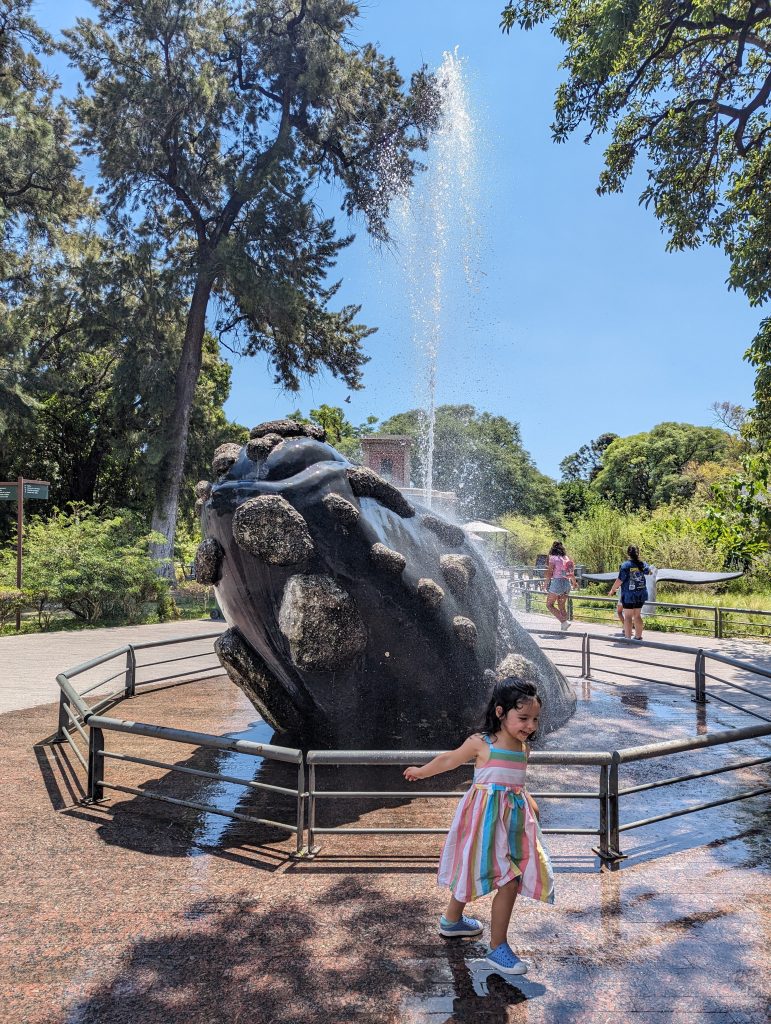
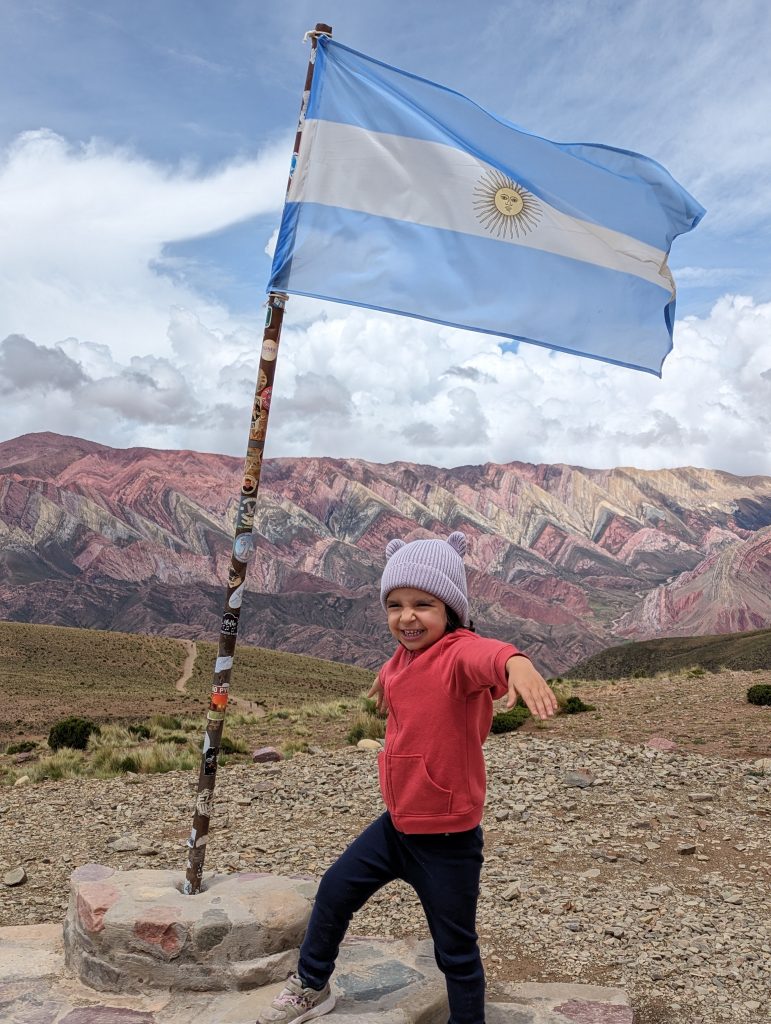
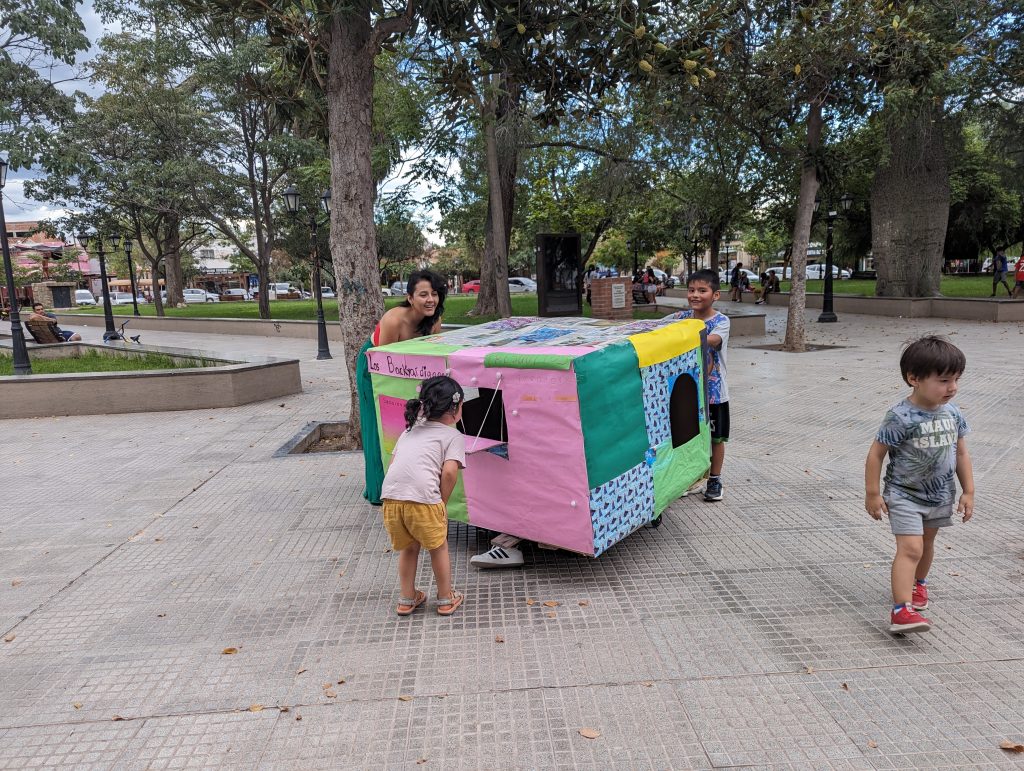
While our travel in Argentina was limited to three specific regions, generally speaking Argentinians were welcoming and traveling was easy. Besides figuring out the exchange rate and making sure we had enough cash on hand, Argentina made for a beautiful and enjoyable destination with our kid, and we are looking forward to coming back in future!

